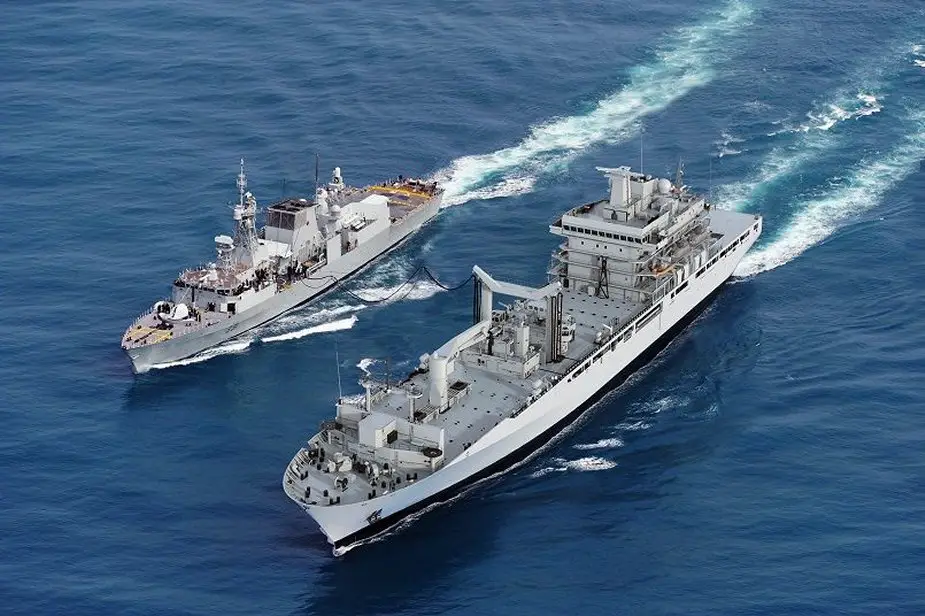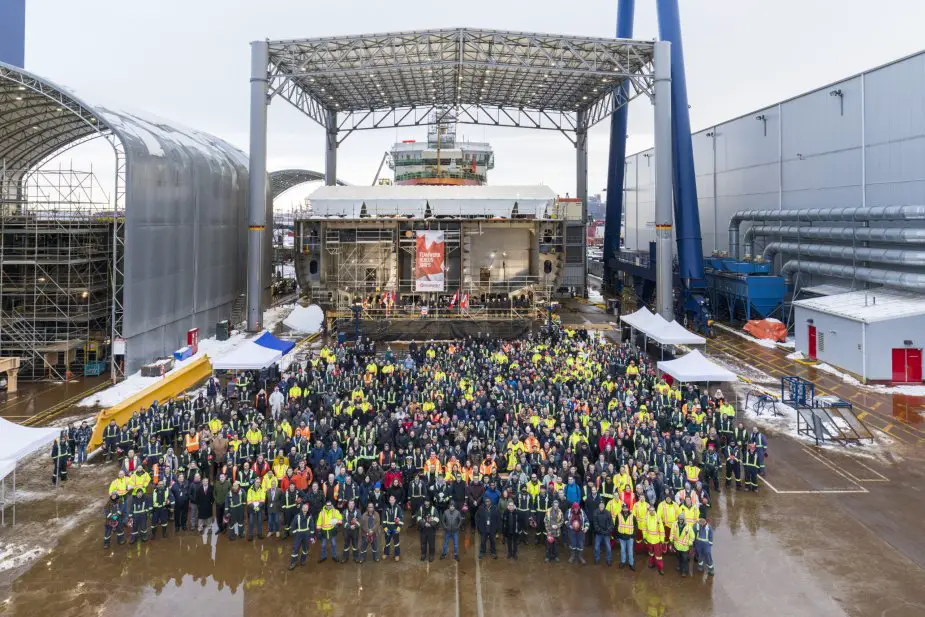On January 16, 2020, Seaspan Shipyards and its more than 2,800 employees were proud to host the Honourable Jonathan Wilkinson, Minister of Environment and Climate Change and Member of Parliament for North Vancouver, and Vice-Admiral Art McDonald, Commander of the Royal Canadian Navy, for a ceremonial keel-laying event for the Royal Canadian Navy’s (RCN) future Her Majesty’s Canadian Ship (HMCS) Protecteur.
On January 16, 2020, Seaspan Shipyards and its more than 2,800 employees were proud to host the Honourable Jonathan Wilkinson, Minister of Environment and Climate Change and Member of Parliament for North Vancouver, and Vice-Admiral Art McDonald, Commander of the Royal Canadian Navy, for a ceremonial keel-laying event for the Royal Canadian Navy’s (RCN) future Her Majesty’s Canadian Ship (HMCS) Protecteur.
 Artist's rendition of JSS at sea (Picture source: Government of Canada)
Artist's rendition of JSS at sea (Picture source: Government of Canada)
The keel-laying event is a significant milestone in a ship’s construction during which a newly minted coin is placed near the keel where it will remain for the duration of the ship’s life. The coin is said to bring good luck for the builders and all those who sail in the vessel.
The future HMCS Protecteur, the first of two joint support ships to be built by Seaspan as part of the National Shipbuilding Strategy (NSS), will be able to conduct a full range of military operations in high-threat environments. The fourth vessel to be designed and built by Seaspan under the NSS and the largest naval ship by length ever built in Canada, the future HMCS Protecteur is scheduled for delivery in 2023.
In 2019, Seaspan delivered Sir John Franklin and the Capt. Jacques Cartier Offshore Fisheries Science Vessels (OFSVs) to the Canadian Coast Guard. These were the first two large vessels built and delivered under the NSS. Seaspan will deliver a third OFSV to the Coast Guard – the future John Cabot – in summer 2020.
In addition to building and delivering state-of-the-art ships, Seaspan is also delivering significant socio-economic benefits as a result of the NSS. Seaspan has helped to rebuild a marine industrial sector, creating thousands of jobs, leveraging a supply chain of more than 600 suppliers and generating more than $1 billion in economic activity across Canada.
At over 173 meters in length and with a design displacement of nearly 20,000 tonnes, the vessels will be among the largest ships built on Canada’s West Coast once complete. They will be capable of reaching speeds higher than 20 knots (37 km/h), with a range of 10,800 nm (20,000 km) with the ice-edge capability to access Nanisivik Naval Facility in the summer navigation season.
The vessels will have a multi-purpose covered deck with the ability to carry up to 10,000 tonnes of ship fuel, 1,300 tonnes of aviation fuel, 1,100 tonnes of ammunition as well as 1,000–1,500 lane meters of deck space for carrying vehicles and containerized cargo. The vessels will also have hospital facilities as well as a large helicopter deck with two landing spots for the CH-148 Cyclone helicopters, hangar space for four helicopters, and a roll-on/roll-off deck for vehicles onto a dock.
The JSS will have a crew of up to 199 personnel plus its air detachment and mission personnel for a total of 239 onboard accommodations.
The first of class, HMCS Protecteur, is scheduled for a 2023 delivery with HMCS Preserver expected to follow in 2025.
 Canadian Navy’s future HMCS Protecteur (Picture source: Seaspan)
Canadian Navy’s future HMCS Protecteur (Picture source: Seaspan)







